A kitchen garden is an area that grows herbs, fruits, and vegetables for home use. Below are some basic steps to becoming a successful small kitchen gardener.
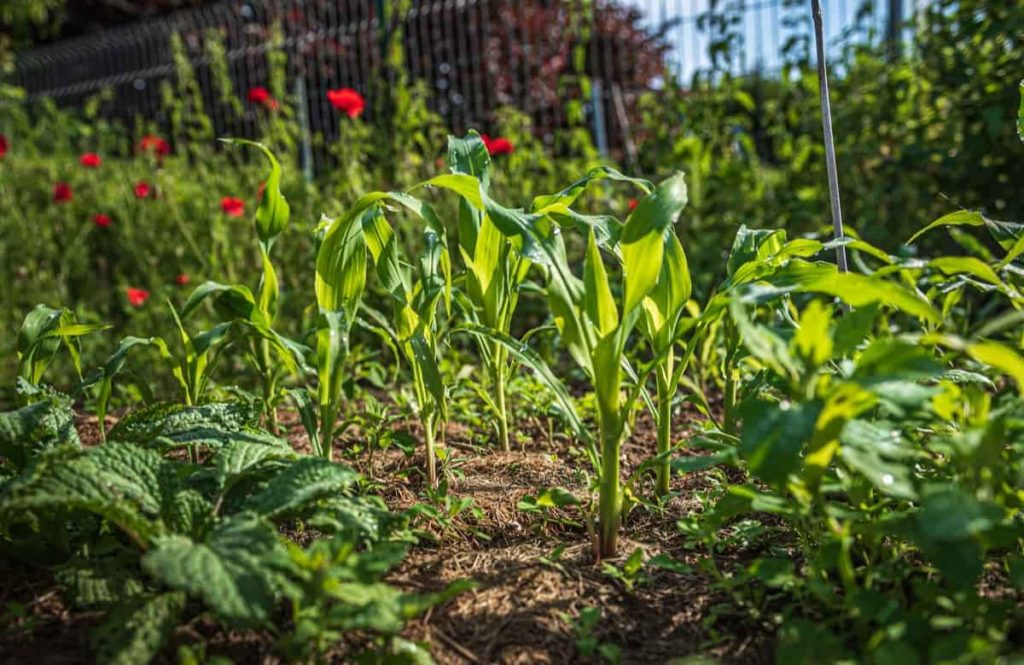
How to start a kitchen garden from scratch for beginners
What is a kitchen garden?
A kitchen garden is where vegetables, fruits, and herbs are grown for home use. Edible container gardens can be planted with a little planning. The concept of a kitchen garden should be spread so that people can contribute. For pretty much everyone’s health, happiness, and finances, the family. The idea of a kitchen garden must be spread to contribute substantially to every family’s health, happiness, and economy.
What is an organic kitchen garden?
In organic kitchen gardening, no synthetic pesticides or fertilizers are used. The food prepared is 100% pure, homegrown ingredients, completely fresh, and easy on the pocket. Organic kitchen gardening can generally be done in small apartments, especially with the concept of terrace gardening becoming popular. It provides homeowners with fresh, pesticide-free food, and the process can be therapeutic.
One of the best benefits of a kitchen garden at home is that it provides fresh varieties of vegetables free from harmful chemicals that can cause health problems. Kitchen gardening positively affects our well-being. It’s a relaxing activity that can help manage anxiety. One can be creative by recycling, painting, and using old pots, containers, plastic bottles, milk cartons, etc., as planters. A home kitchen garden improves air quality, enhances the space’s aesthetics, and brings a sense of accomplishment and happiness.
You will need organically grown plants and seeds. And for that, several good companies provide organic vegetable garden seeds. Many nurseries, garden centers, and online stores are also starting to sell a selection of organic seeds. These are usually very clearly labeled as “organic.” Organic seeds are obtained from organically grown plants, never treated with chemical pesticides or fungicides, and never genetically modified.
In case you missed it: How to Start Organic Kitchen Gardening: Tips, Ideas, and A Step-By-Step Guide for Beginners
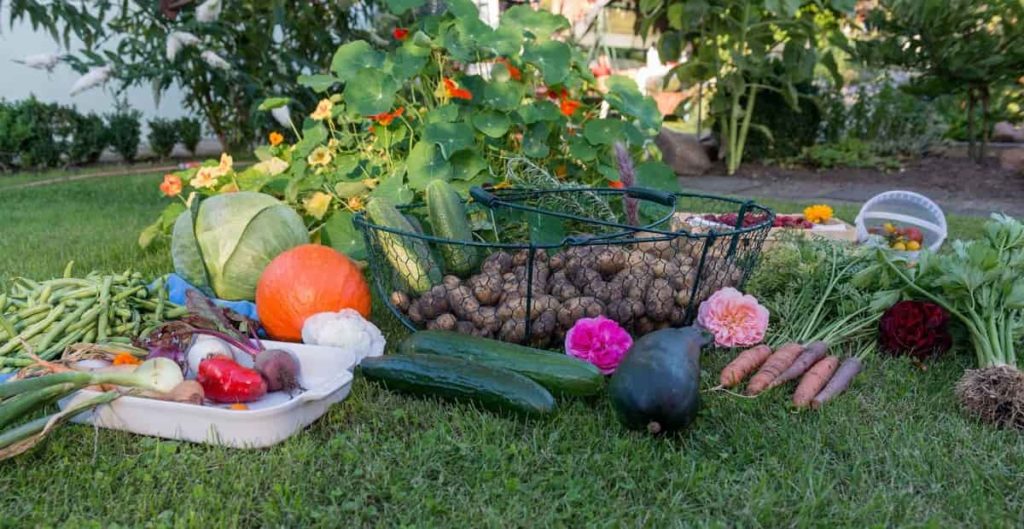
A step-by-step procedure for starting an organic kitchen garden;
- Prepare the soil
- Make good compost
- Prepare your garden
- Choose the right plants
- Plant crops in beds
- Water the crops
- Weeding
- Use organic fertilizers
How do you start a kitchen garden?
- Assess the sunlight
- Choose your pots
- Choose carefully what to grow
- Get the right soil
- Start planting seeds indoors
- Invest in the best tools
- Get seeds and plants
- Watch your food grow
- Enjoy your kitchen garden and keep learning
- Keep your garden close to the kitchen.
What is the difference between a vegetable garden and a “potager”/kitchen garden?
A vegetable garden is usually planted in the spring and harvested in the fall. Excess food is stored for later use. Its only concern is to provide vegetables efficiently. On the other hand, the concept behind a “potager”/kitchen garden is about producing healthy and fresh culinary herbs, plants, and flowers and creating a visually stunning and appealing aesthetic design. Unlike traditional vegetable gardens, a kitchen garden or “potager” produces food year-round.
What are the tools used in the garden?
| Good pair of gloves | Harvest basket |
| Dibber | Steel trug for storage |
| Spacing ruler | Watering can or hose |
| Small rake | Plant tags |
| Hand broom | Twine |
| Hori hori | Garden mesh |
| Pruners | Frost cloth |
| Scissors/snips |
How do I choose a container for my garden?
The great thing about growing plants is that it’s not just about the plants; it’s also about the instant accent that can be added to your chosen space. They can become the center of attention and spark a lot of conversation. You can grow kitchen garden plants in almost any container. You can use tetra packs and old bottles or buy beautiful metal, ceramic or wooden containers.
Choose containers according to your interest and, most importantly, where you have chosen to start your kitchen garden. You can get containers or pots to mount on walls or hang them as window boxes. You can also try square foot gardening in square wooden boxes if you have a terrace or balcony.
How do I start a kitchen garden?
The trick to a successful small vegetable garden is to grow small amounts of different crops that offer big rewards. Choose easy bumper crops like cut and repurposed salad leaves, chili plants, fresh herbs, leafy greens, and super sweet peas straight from the pod. It reduces waste and grows fresh plants at home. Any place that receives sunlight and any container (clay pots, plastic pots, old bottles, plastic containers, tetra boxes, etc., with holes for air) used to grow plants. Green and leafy plants can be grown in shallow pots.
Choose a site – Whether it’s your backyard or kitchen window, you can have your garden. A good gardening site receives at least six hours of sunlight daily and has an easy water source. Start container gardening on your balcony if you don’t have a large outdoor space for kitchen gardening.
Easy steps to plant a kitchen garden at home;
Choose a location for sunlight to plant a kitchen garden at home (windowsill, balcony, terrace, or outdoors). Use as much vertical as horizontal space by growing things on walls, fences, and trellises in a sunny spot. If you plan to grow vegetables on a windowsill, ensure the window grill is strong enough to support the weight. Remember that plants and pots get heavier when watered.
In case you missed it: Kitchen Garden Tips, Ideas, Benefits, Design

For a thriving kitchen garden, initially get the right soil mix, as the nutrients in the soil determine how healthy the vegetables and fruits will be. Add compost, coir peat, natural fertilizers, and regular nursery soil. You can also add cow dung. Coco peat obtained from coconut husks is important for retaining moisture and controlling soil temperature. Kitchen gardening does not require much space. You can grow a kitchen garden in containers, raised beds, or on the ground.
Greens can be grown in small pots or hanging baskets, but Tomatoes, Potatoes, Ginger, and Eggplant need a larger pot. The benefit of growing vegetables in pots is that with limited space, you can place the pots where they get maximum sunlight. Potatoes, Radishes, Salad Greens, Carrots, Herbs, Peppers, and Spinach can all be grown easily in containers. When choosing containers, ensure they’re the right size for the plants you’re planting – for example, potatoes need a deeper pot than coriander.
How do I make my kitchen garden vertical?
Vegetables for vertical growing include Pole Beans, Climbing Peas, Sweet Potatoes, Grape Tomatoes, and a wide variety of Zucchini, Cucumbers, Melons, and Squash can be trained. They are low maintenance, easy to install, and suitable for outdoor and indoor use. The best plants for hanging baskets are trailing flowers and also be used to grow a wide range of vegetables, increasing the productivity of small vegetable garden ideas.
Vertical garden ideas are a great method to design your small vegetable garden ideas. Traditional climbing roses or best climbing climbers are natural for pergola training; however, you can also use them to support vines. The best vegetable plants to pair with your pergola ideas are Cucumbers, Squash, Pumpkins, and Beans because they need a support system to grow. Growing your crops vertically will make the most of the available space and help protect them from slugs and other pests – they’re also easier to care for.
What is good for a kitchen garden?
A few herbs and plants that are easy to care for in the kitchen garden are Lemongrass, Coriander, Chives, Red Pepper, Mint, Basil, Celery, Fenugreek, Spinach, Swiss chard, Cabbage, Arugula, Lettuce, Spinach, Onion, Garlic, Green Beans, Coriander, Parsley, Carrots, Tomatoes, Cucumbers, Beetroots, Bell Peppers, Oregano, Thyme.
How to water a vegetable kitchen garden?
Always use a gentle watering can for the home kitchen garden. Although regular watering is necessary, overwatering can cause damage and leach nutrients from the soil. Water the plants twice in summer and alternate days in monsoon. To ensure your plants get the most water, check the soil moisture with your fingers and then water the plant as needed. Fertilize the soil after rains, as heavy rains can wash nutrients out of the soil. Excessive water damages the plant, as the roots shrivel and cannot be regenerated.
What components be in a kitchen garden?
Size – A kitchen garden is relatively small, ranging from 25 to 250 square feet, while a vegetable garden is much larger and more spacious. It can be spacious, with thousands of square feet of growing space.
Location – You’ll be harvesting from the kitchen garden often—right before dinner, when you pack an early morning lunch or while making an herb topping for dinner—you’ll want to have a kitchen garden nearby—ideal right outside your back door.
Maintenance – Because you’re picking on it regularly, you’re also taking care of it. The kitchen garden is designed for light maintenance on a daily or weekly basis. It’s not heavy lifting, just a little pruning, a little planting there, over and over again throughout the growing season.
Are succulents good in the kitchen?
- Because of their compact appearance, ability to survive, and even thrive in moderate light and low humidity, succulents are perfect for your kitchen.
- If you’ve been gardening for a while, you know that indoor succulents can live with more than a little neglect.
- The best succulents for the kitchen garden are Aloe Vera, Snake Plant, Jade Plant, Zebra Haworthia, Burros Tail, etc.
In case you missed it: Organic Compost Making from Manures, Kitchen Waste
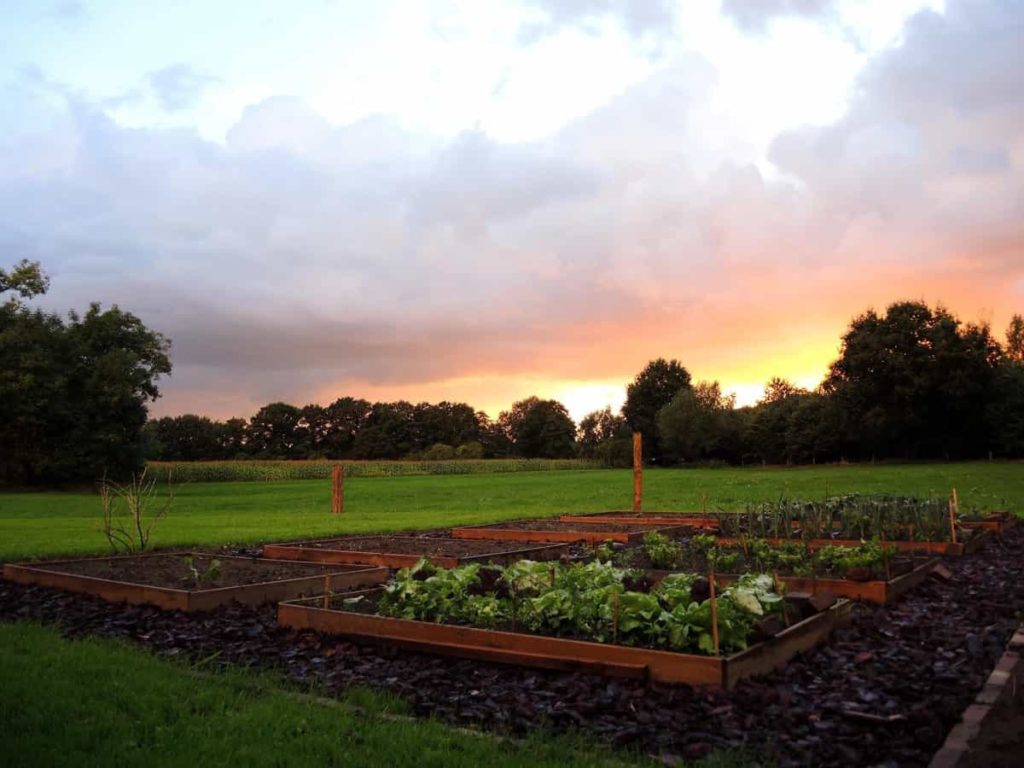
What are the kitchen garden structures?
Raised beds – These allow you to provide optimal growing conditions for your plants without spending years amending the soil where you live. Read more about why raised beds are better for gardening. Using a raised bed for growing plants allows you to control the quality of the soil and prevent it from compacting. Vegetable roots can grow unhindered. The bed doesn’t have to be too high off the ground to reap the benefits of being in a raised bed. Even 6 to 8 inches may be sufficient. Raised garden beds are also called garden boxes and are perfect for growing small plots of vegetables.
- Trellises – When climbing vines grow, trellises mainly provide essential support, and when your kitchen garden is covered in snow in the winter season, trellises provide vertical interest.
- Borders – Borders help make your kitchen garden a distinct area of your outdoor space and keep weeds at bay.
- Pathways – Pathways ensure that you can easily walk around your garden.
In addition to these structures, you will also need good soil, four to six hours of sunlight, a watering system, and your plants.
Why a kitchen garden?
Keeping in mind the importance of vegetables, the concept of preparing vegetables for one’s needs using the fresh water available in one’s backyard and the kitchen has come up. It will facilitate the successful production of vegetables for our own needs. Cultivation in a small area facilitates pest and disease control methods by removing infected parts and the non-use of chemicals.
It is a safe process that does not leave toxic pesticide residues in the produce. The trick to a successful small vegetable garden is to grow small amounts of different crops that offer big rewards. Choose easy bumper crops like cut and repurposed salad leaves, chili plants, fresh herbs, leafy greens, and super sweet peas straight from the pod.
Is cactus good for the kitchen garden?
Bring a touch of the Southwest into your kitchen with cactus, especially if your kitchen gets particularly hot and dry. These hardy desert plants are cousins of succulents, and they also like to bask in the sun. A cactus is a great choice if you’re short on space but have a bright window.
What are the types of kitchen gardens?
1. Production/basic garden – This kitchen garden has no supporting structures such as sheds, storage rooms, and greenhouses. It is close to the house and protected from the weather, birds, animals, and even people. It has fertile soil and water supply from nearby streams, rivers, ponds, and springs.
2. The cottage kitchen garden – This type of kitchen garden lies between the “basic” kitchen garden and the much larger, more luxurious walled kitchen garden. The country dwellers planted their kitchen gardens right around the cottage. It produces enough produce for the family and a surplus that can be stored or preserved for the winter months. The garden can be decorated with a mixture of topiary hedges, trained fruit trees, flowers, vegetables, and narrow paths.
3. Potager/decorative kitchen garden – These gardens aim for beauty and functionality. “Potager” means “kitchen garden” in French. “Potager” is well-suited to the cottage garden but can grow very large, such as a spectacular walled kitchen garden.
4. Allotment garden – The allotment system developed in the suburbs of cities in the early nineteenth century. The concept behind the allotment was to provide wholesome entertainment to city dwellers.
5. The walled kitchen garden: Luxurious walled kitchen gardens were a must for any large country home. These gardens were very large, unlike the kitchen gardens of working-class households.
How to make compost for the kitchen garden at home?
There are some essential kitchen garden essentials if you plan to start a vegetable garden on your balcony or outdoor space. There are different ways to compost organic matter. A simple method is to use covered clay pots to add organic waste (avoid excess cooking waste, onion peels, or lemon peels) and sprinkle red clay on each layer until the pot is full. Repeat this process. A 20-liter pot should last about a month for a family of four. The contents of the pot will be ready for use in compost form after two months.
In case you missed it: 17 Key Rules for Effective Organic Farm Management: From Planning to Reduce Production Cost
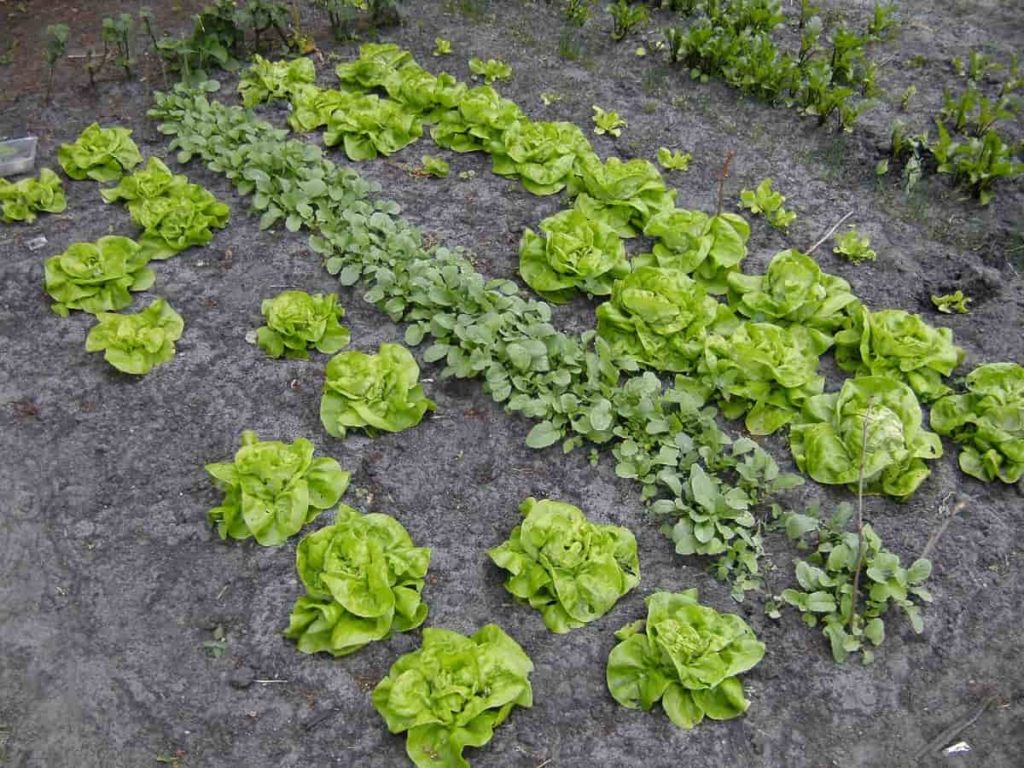
What are the disadvantages of a kitchen garden?
- Kitchen gardening takes a lot of time – For those who consider gardening a hobby, it is a task that needs both time and patience. Nevertheless, if the results please you, the efforts are definitely worth the effort.
- Presence of many insects and pests – Although not all of them will certainly be dangerous or fatal to you or your family, one of the drawbacks of a kitchen garden is the presence of unwanted insects and pests.
What is the aim of the kitchen garden?
The main objective of a kitchen garden is maximum production and a continuous supply of vegetables for the table throughout the year. Kitchen gardens provide affordable vegetables that reduce food costs and protect the environment. Plants grown in home gardens are important in filling nutritional gaps and providing access to food harvested, prepared, and consumed by family members.
How much sun is needed for a vegetable garden?
Find the right spot to place your pots – Light requirements vary according to plants and seasons. However, most kitchen garden plants need at least 3-6 hours of sunlight daily. Warm temperatures and good air circulation are also important. Look for small spaces such as windowsills, spaces above the sink, or corners you don’t use that have access to direct sunlight. Also, remember to turn different parts of your plant towards the sun every few days, so they grow evenly.
Why is it good to have a kitchen garden?
A kitchen garden is one way to ensure you have a steady supply of vegetables in your diet. Even better, you can be assured that your vegetables have no chemical residues compared to the vegetables you buy at the market.
Simple kitchen gardening tips for beginners;
- Kitchen garden needs care and maintenance. So start small, choose six to eight types of vegetables initially, and then gradually add more vegetables.
- Plant the seed about three times the seed’s diameter unless indicated on the seed package. Cover the seeds entirely with soil and water them well, making sure not to expose them. Also, do not sow the seeds too close to each other.
- When planting seeds, it is best to mark the rows with strong labels so you can remember what you have planted. Not all seeds will germinate or grow.
- Nutrients in the soil keep plants healthy. Add organic compost from tea or vegetable peels to the soil to improve its quality.
- Do not overwater plants. It is one kitchen gardening basic that will help protect your plants. Check if the soil is dry with enough water to keep it moist.
- Water the kitchen garden plants in the morning or evening. Sprinkle water gently on the sprouting seeds.
- Prune regularly for vigorous growth but do not cut over one-third of the plant.
- Remove dry, wilted leaves and flowers to encourage rapid new growth.
- Mulch the plants regularly by adding grass, paddy straw, dry leaves, etc. Mulch is a weed suppressant and acts as a barrier between soil and heat, cold and wind. Mulch helps retain moisture in the soil.
- Be careful about insect attacks. Spray neem oil to keep insects away.
What are the benefits of a kitchen garden?
- Saves money
- Fights food insecurity
- Reduces stress
- Increase in nutrients
- Contributes to sustainable living
In case you missed it: How to Start Organic Backyard Gardening: A Step-by-Step Guide for Beginners
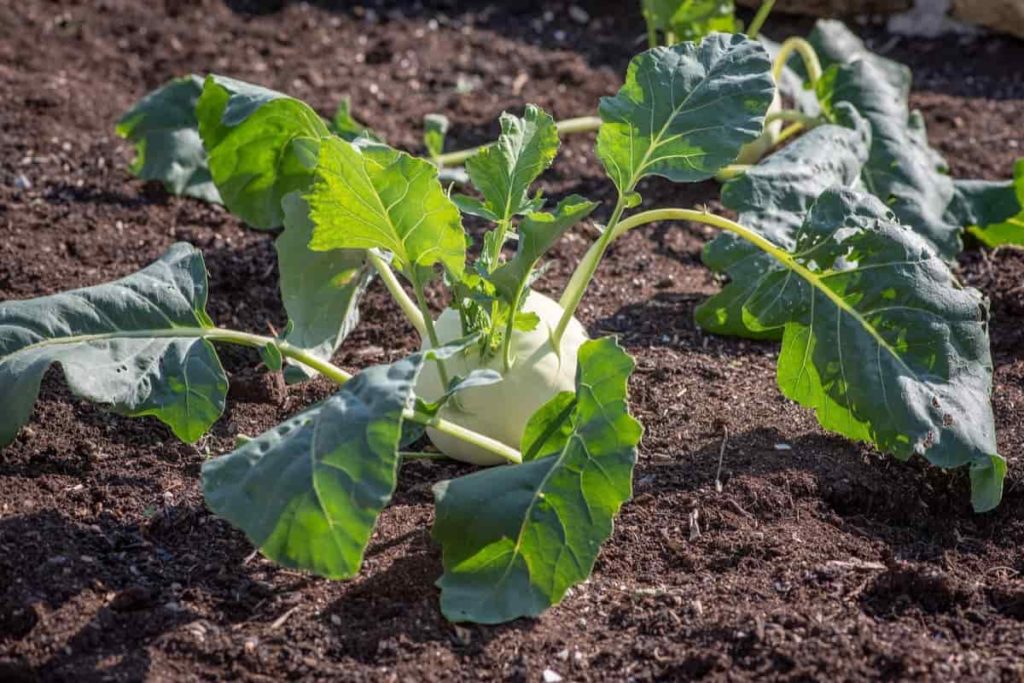
How do you maintain a good kitchen garden?
- Care and maintenance tips for your kitchen garden plants: Fertilize using dried banana peels, egg shells, or small pieces of ground coffee every month.
- Prune regularly for vigorous growth but do not prune more than ⅓ of the plant at a time.
- If you are a first timer, take a small pot first and gradually increase the quantity.
Conclusion
A kitchen garden provides delicious food, enjoyment, and a measure of food safety. Choose the brightest area of your home like in the yard, a raised bed, on the patio, or a sunny window—and then plant seeds or plants in organic soil from a local nursery. A kitchen garden is where you grow food for consumption, such as herbs, vegetables, and fruit. Kitchen farming leads to better health in urban areas. Windows, balconies, and vertical walls are a joy to harvest vegetables, and any such space can be used to plant a kitchen garden.
- How to Build a Low-budget Goat Shed: Cheap Ideas and Tips
- Goat Farming Training Programs in India: A Beginner’s Guide
- Types of Pesticides Used in Agriculture: A Beginner’s Guide
- Economical Aquaculture: A Guide to Low-Budget Fish Farming
- 15 Common Planting Errors That Can Doom Your Fruit Trees
- How to Make Houseplants Bushy: Effective Tips and Ideas
- Innovative Strategies for Boosting Coconut Pollination and Yield
- Pollination Strategies for Maximum Pumpkin Yield
- The Complete Guide to Chicken Fattening: Strategies for Maximum Growth
- Natural Solutions for Tulip Problems: 100% Effective Remedies for Leaf and Bulb-Related Issues
- Revolutionizing Citrus Preservation: Towards a Healthier, Greener Future
- Natural Solutions for Peony Leaf and Flower Problems: 100% Effective Remedies
- Maximizing Profits with Avocado Contract Farming in India: A Comprehensive Guide
- Natural Solutions for Hydrangea Problems: 100% Effective Remedies for Leaf and Flowers
- The Ultimate Guide to Choosing the Perfect Foliage Friend: Bringing Life Indoors
- From Sunlight to Sustainability: 15 Ways to Use Solar Technology in Agriculture
- The Ultimate Guide to Dong Tao Chicken: Exploring from History to Raising
- The Eco-Friendly Makeover: How to Convert Your Unused Swimming Pool into a Fish Pond
- Mastering the Art of Delaware Chicken Farming: Essentials for Healthy Backyard Flocks
- 20 Best Homemade Fertilizers for Money Plant: DIY Recipes and Application Methods
- How to Craft a Comprehensive Free-Range Chicken Farming Business Plan
- Brighten Your Flock: Raising Easter Egger Chickens for Beauty and Bounty
- How to Optimize Your Poultry Egg Farm Business Plan with These Strategies
- Subsidy for Spirulina Cultivation: How Indian Government Schemes Encouraging Spirulina Farmers
- Ultimate Guide to Raising Dominique Chickens: Breeding, Feeding, Egg-Production, and Care
- Mastering the Art of Raising Jersey Giant Chickens: Care, Feeding, and More
- Ultimate Guide to Raising Legbar Chickens: Breeding, Farming Practices, Diet, Egg-Production
- How to Raise Welsummer Chickens: A Comprehensive Guide for Beginners
- How to Protect Indoor Plants in Winter: A Comprehensive Guide
- Ultimate Guide to Grow Bag Gardening: Tips, Tricks, and Planting Ideas for Urban Gardeners
- Guide to Lotus Cultivation: How to Propagate, Plant, Grow, Care, Cost, and Profit
- Agriculture Drone Subsidy Scheme: Government Kisan Subsidy, License, and How to Apply Online
- Ultimate Guide to Raising Araucana Chickens: Breed Profile, Farming Economics, Diet, and Care
- Bringing Hydroponics to Classroom: Importance, Benefits of Learning for School Students
- Ultimate Guide to Raising Polish Chickens: Breed Profile, Farming Economics, Diet, and Care
- Ultimate Guide to Raising Australorp Chickens: Profile, Farming Economics, Egg Production, Diet, and Care